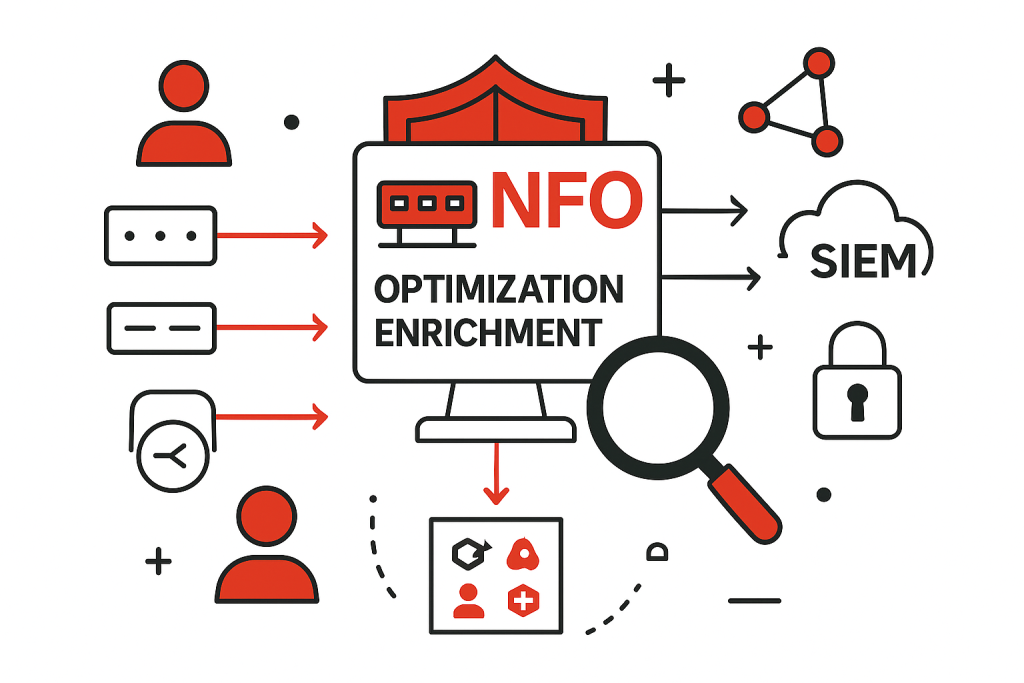In today’s rapidly evolving threat landscape, security operations teams are constantly battling a deluge of alerts and data. Manual processes are no longer sustainable, demanding a shift towards automation. Network Security Automation offers a powerful solution, and at its heart lies the intelligent utilization of network flow data, particularly NetFlow.

NetFlow, a protocol developed by Cisco, provides invaluable insights into network traffic patterns. It records details about IP traffic flows, including source and destination IPs, ports, protocols, and traffic volumes. However, the sheer volume of raw NetFlow data can be overwhelming. Without proper management, analyzing this vast amount of information becomes time-consuming and resource-intensive, effectively hindering its security value.
Taming the Data Deluge: The Importance of Volume Reduction
Imagine trying to find a single suspicious needle in a massive haystack. That’s often the challenge with unoptimized NetFlow data. Implementing techniques to reduce NetFlow data volume is crucial for efficient security operations. Strategies like deduplication (eliminating redundant records), aggregation (combining similar flows), and NetFlow stitching (reconstructing bi-directional conversations) significantly decrease the data footprint without sacrificing essential security intelligence. This optimized data is not only easier to manage but also accelerates analysis and threat detection processes.
From Raw Data to Rich Insights: The Power of NetFlow Enrichment
While reducing volume is essential, the true power of NetFlow for security automation lies in enrichment. Think of raw NetFlow data, with its basic IP addresses, as a blurry photograph. Without context, those naked IP addresses offer limited actionable intelligence. Enriching this data is like bringing the image into sharp focus, adding layers of crucial information.
By correlating NetFlow records with application identification, geolocation data, user identities from directory services, and threat intelligence feeds, we transform basic traffic logs into high-quality security intelligence. This enriched data becomes invaluable for Machine Learning (ML) and other Artificial Intelligence (AI) algorithms. ML models thrive on feature-rich data, and enriched NetFlow provides the necessary context to accurately learn normal network behavior and effectively identify subtle anomalies that raw data would miss.
Leveraging Existing Investments: Seamless Integration
The beauty of utilizing enriched NetFlow data for security automation is its ability to integrate seamlessly with existing security infrastructure. Most organizations have already invested in Security Information and Event Management (SIEM) systems and IT Operations monitoring tools. Feeding enriched NetFlow data into these platforms leverages these existing investments, transforming them into more powerful security engines.
Integration enables correlation of NetFlow data with other valuable machine data collected by these systems, such as firewall logs, server logs, and endpoint detection and response (EDR) alerts. This holistic view provides a comprehensive understanding of security events, allowing for more accurate threat detection, faster incident response, and improved overall security posture. For instance, correlating unusual network traffic patterns identified by NetFlow with suspicious endpoint activity flagged by an EDR system can provide irrefutable evidence of a sophisticated attack.
Streamlining Security Operations: Real-World Benefits
Automating security operations with enriched NetFlow data translates to tangible benefits:
- Faster Threat Detection: AI/ML algorithms analyzing enriched data can identify anomalies and potential threats in near real-time, reducing dwell time.
- Improved Alert Prioritization: Context-rich data enables better correlation and reduces false positives, allowing security teams to focus on genuine threats.
- Enhanced Incident Response: Comprehensive network visibility and enriched context accelerate investigation and remediation efforts.
- Proactive Security Posture: Identifying patterns and anomalies can help predict potential future attacks, enabling proactive security measures.
Getting Started with NetFlow for Security Automation
Implementing NetFlow-driven security automation involves several key steps:
- Ensure Comprehensive NetFlow Collection: Configure network devices to export NetFlow data effectively.
- Implement Volume Reduction Strategies: Deploy tools and techniques for deduplication, aggregation, and stitching.
- Deploy NetFlow Enrichment Solutions: Utilize solutions that can add contextual information to flow records.
- Integrate with Existing Security Systems: Configure your SIEM and other tools to ingest and analyze the enriched NetFlow data.
- Develop Automation Rules and Playbooks: Create automated workflows for alert triage, investigation, and response based on NetFlow insights.
By embracing Network Security Automation and intelligently leveraging NetFlow data, organizations can significantly enhance their security posture, streamline operations, and effectively combat the ever-growing tide of cyber threats. The journey from voluminous raw data to actionable security intelligence is paved with optimization and enrichment, ultimately empowering security teams to work smarter, not just harder.
